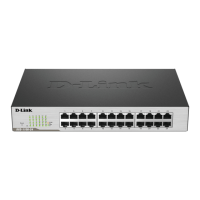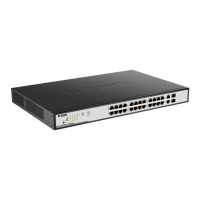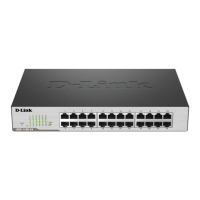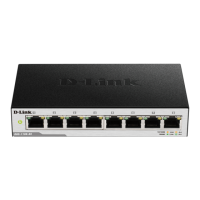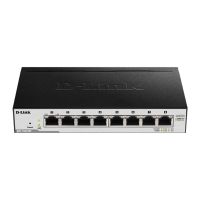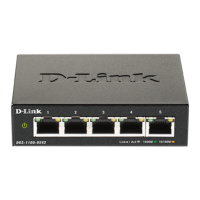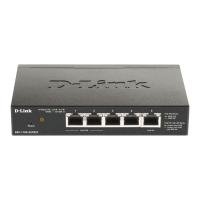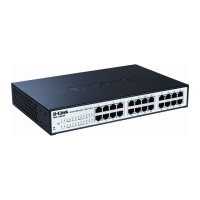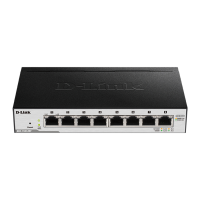Do you have a question about the D-Link DGS-1100-24P/ME and is the answer not in the manual?
Describes how to configure the switch's IP address for network management and communication.
Steps to connect the AC power cord to the switch and an outlet.
Procedure for connecting the switch to a protective ground using provided hardware.
Saves the current switch configuration to non-volatile RAM.
Restarts the switch, with an option for immediate reboot without confirmation.
Resets the switch to factory default settings (config, system, or default).
Configures Ethernet port settings like MDIX, description, flow control, state, and speed.
Enables loopback detection on the switch, potentially disabling Spanning Tree protocol.
Configures loopback detection settings like interval time, recovery time, and trap status.
Downloads and installs firmware, boot, or configuration files from a TFTP server.
Uploads current switch settings (firmware or configuration) to a TFTP server.
Configures the syslog protocol to send system log data to a remote host.
Sets the aging time for the forwarding database entries.
Configures traffic control to prevent storm issues by setting thresholds.
Configures bandwidth control, enabling ingress and egress rate limiting.
Configures the scheduling mechanism for QoS (SP or WRR).
Specifies default priority handling for untagged packets received by the switch.
Enables a previously entered port mirroring configuration.
Configures a mirror port and source port pair for traffic monitoring.
Adds or deletes ports to a configured VLAN and modifies VLAN names.
Configures the management VLAN by specifying the VLAN ID.
Configures the port PVID of VLAN on the switch.
Configures DHCPv6 client state, IP address, or bootp for the interface.
Enables IGMP snooping on the switch.
Configures IGMP snooping, including fast leave and state settings.
Configures global power saving modes like link detection, port shutdown, and hibernation.
Configures power saving settings for specific ports or all ports, including time ranges.
Sets the edge state (true, false, auto) for each port in the Spanning Tree Protocol.
Configures system-wise PoE functions and settings, including trap state.
Configures PoE port settings, including state, time range, priority, and power limit.
Configures prevention for various DoS attacks on the switch.

